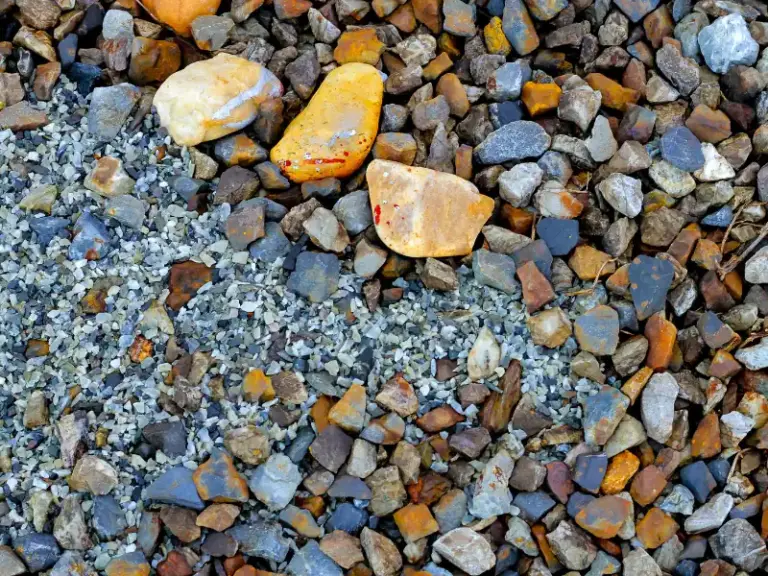Can You Put Sand Between Pavers (Brick + Travertine)? Pros and Cons
Sand is one of the most common materials used to create even bedding underneath paving bricks. However, it also works great as filler material in the crevices between pavers. Whether you have a brick-paved or travertine-paved surface, you can fill in the paver crevices with sand to form a stable, immovable hardscape.
Putting sand between pavers plays a crucial role in the patio floor. Joint sand enhances the paver’s stability and helps prevent pavers from shifting problems. It hinders wee growth as well as enhances the aesthetic value of the pavers in your yard. Polymetric sand and dust are best for pavers’ joints.
Can you put sand between pavers?
You can put sand between your driveway or patio pavers to enhance the stability and integrity of the paved surface. The sand fills in the joints between the pavers and generates friction, thus locking the bricks in place to prevent them from shifting.
Paver joint sand also hinders the growth of weed plants between the joints, thus helping to maintain your driveway’s or patio’s visual appeal. Alongside the above functional roles, sand between pavers may also serve an aesthetic role. Some types of paver joint sand are available in multiple color choices, thus you can go for a shade that builds upon your curb appeal.
You can always undertake paver joint sanding as a DIY project or call in the experts.
How to fill sand between pavers
Here’s an elaborate procedure on how to effectively fill in the gaps between your brick or travertine pavers using sand. Before commencing your project, gather the necessary supplies. These include a push broom, a pressure washer, a tarp, and bags of sand.
- Start by protecting any nearby landscape plants that may be damaged by the pressure washer by covering them with the tarp.
- Next, wash off any built-up dirt and debris inside the paver gaps using the power washer. Meanwhile, using your push broom, sweep off any debris off the paved surface, including small rocks and twigs that may end up inside your paver joints alongside the sand.
- Now that your paved surface and paver joints are clean and free of debris, empty your bags of sand on the driveway or patio. Then using a push broom, spread the sand into the gaps between the pavers.
- With every application of sand, run a compacting machine over the paved surface. This helps the sand to settle deeper into the paver joints.
- Once all the paver gaps are completely filled, sweep off excess sand off the surface of your driveway/patio.
Note: Paver joint sand normally washes off over time. As such, consider re-sanding your paver gaps every 2-3 years to keep the bricks or travertine paving blocks in position.
Here a video on how to install polymer sand between pavers.
Best Sand to Put between Pavers
Due to both functional and aesthetical reasons, the best types of sand to put between pavers are polymeric sand, polymeric dust, concrete sand, masonry sand, and white sand.
1. Polymeric Sand
Polymeric sand is a type of sand that’s specially formulated for filling on paver joints. It consists of additives like quartz and crystalline silica that give it greater binding power. Thus, when you wet up polymeric sand for the first time, these polymers are activated, forming a hardened alloy that doesn’t wash away as easily as regular sand.
Polymeric sand is also more compact and less permeable than regular sand, so you don’t have to worry about weeds growing through the paver joints. However, one downside to using this type of paver joint sand is that it’s costly. Polymeric sand also doesn’t work well when mixed with other types of sand.
Note: Polymeric sand is more suited for use in narrow, even-sized gaps, such as those between brick pavers.
2. Polymeric Dust
Polymeric dust is simply polymeric sand that has been crushed down to very fine particle size. When using irregularly shaped natural stone paving blocks, such as travertine blocks, some of the gaps between the pavers will be up to six inches wide. Polymeric dust forms a better binding agent in such wide paver crevices, compared to polymeric sand.
Note: Just like polymeric sand, polymeric dust is also erosion-proof.
3. Concrete Sand
Concrete sand is a coarse type of sand that’s heavily used in home building projects but also performs decently as paving grout. It also mixes well with other types of sand, such as quarry sand.
4. Builder’s Sand/ Masonry Sand
Masonry sand is a more pulverized form of concrete sand. Widely used in construction projects, builder’s sand is an economical alternative to polymeric sand. What’s more, this type of sand is usually readily available at construction stores.
However, mason’s sand also has some disadvantages. For starters, due to the coarse particles, this type of sand is more permeable. As such weeds are more likely to sprout through it and it’s also vulnerable to erosion during downpours.
5. White Sand
White sand is beloved for its unique shade. When used as paving grout, it will instantly elevate your curb appeal. Unfortunately, white sand is difficult to source. For this reason, it’s also very expensive.
Pros and Cons of Putting Sand between Pavers
There are several advantages to using sand as a jointing material between pavers.
- Sand particles interlock well, preventing your paving bricks from shifting out of place as you walk or drive on your paved surface.
- It also prevents weeds from sprouting between the paver crevices. Joint filler sand reduces the likelihood of common weeds like dandelion and thistle from growing on your paver crevices. Meanwhile, it also prevents insects from burrowing into your paved hardscape (especially polymeric sand).
Despite the above disadvantages, there are some downsides to using sand as paver joint filler.
- Sand types with fine-sized particles, like polymeric sand, make the paver crevices impermeable, thus affecting drainage.
- Polymeric sand may leave unsightly haze on your paved surface, which is difficult to get rid of.


